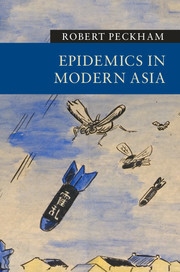Preface
Published online by Cambridge University Press: 05 May 2016
Summary
There is, perhaps, no better place to begin a history of the global than with the hyper-local: the view over Victoria Harbour towards Tai Mo Shan, Hong Kong's highest summit, from my office at the University of Hong Kong. Across the water to the north, Stonecutters Island juts out of the Kowloon peninsula. Acquired by the British from the Qing dynasty in 1860, along with Kowloon, Stonecutters Island has served over the years as a quarry, a military depot, the site of a prison, a smallpox hospital, and a quarantine station. As a result of land reclamation in the 1990s, it was joined to the mainland and today houses a large sewage treatment facility with a naval base operated by the People's Liberation Army (PLA).
Many Hongkongers are likely to be unaware of the history of Stonecutters Island, just as they may be unfamiliar with the history of Taipingshan, in Hong Kong's Central and Western District, where an epidemic of bubonic plague broke out in 1894, often taken to mark the onset of the third plague pandemic. From southern China and Hong Kong, plague diffused along shipping routes to India, Australia, South Africa, North America, and Europe. Perhaps as many as 15 million people died worldwide. Today, hard-surface ball courts and a small public garden mark the spot where, following the Taipingshan Resumption Ordinance in September 1894, the British demolished the crowded Chinese tenements at the epicenter of the outbreak.
The contemporary landscape of Hong Kong, like many other Asian cities, has been shaped by disease episodes of the past. Yet most accounts of the transformations that have taken place across the region over the last few centuries focus exclusively on political, social, economic, and cultural upheavals. For the most part, disease is mentioned only as a backdrop to more momentous events, relegated to a footnote, or overlooked altogether. The aim of this book is to write epidemics back into history, examining the transformative role that disease has played in making modern Asia, and suggesting how the threat of infection continues to influence societies across the region today.
Epidemics in Modern Asia proposes a new transnational approach to modern Asian history and global modernity; one that places emphasis on connections and continuities over space and across time – as well as on discontinuities – and, in so doing, resituates the experience of epidemics at the heart of Asian history.
Information
- Type
- Chapter
- Information
- Epidemics in Modern Asia , pp. xiii - xviiiPublisher: Cambridge University PressPrint publication year: 2016
